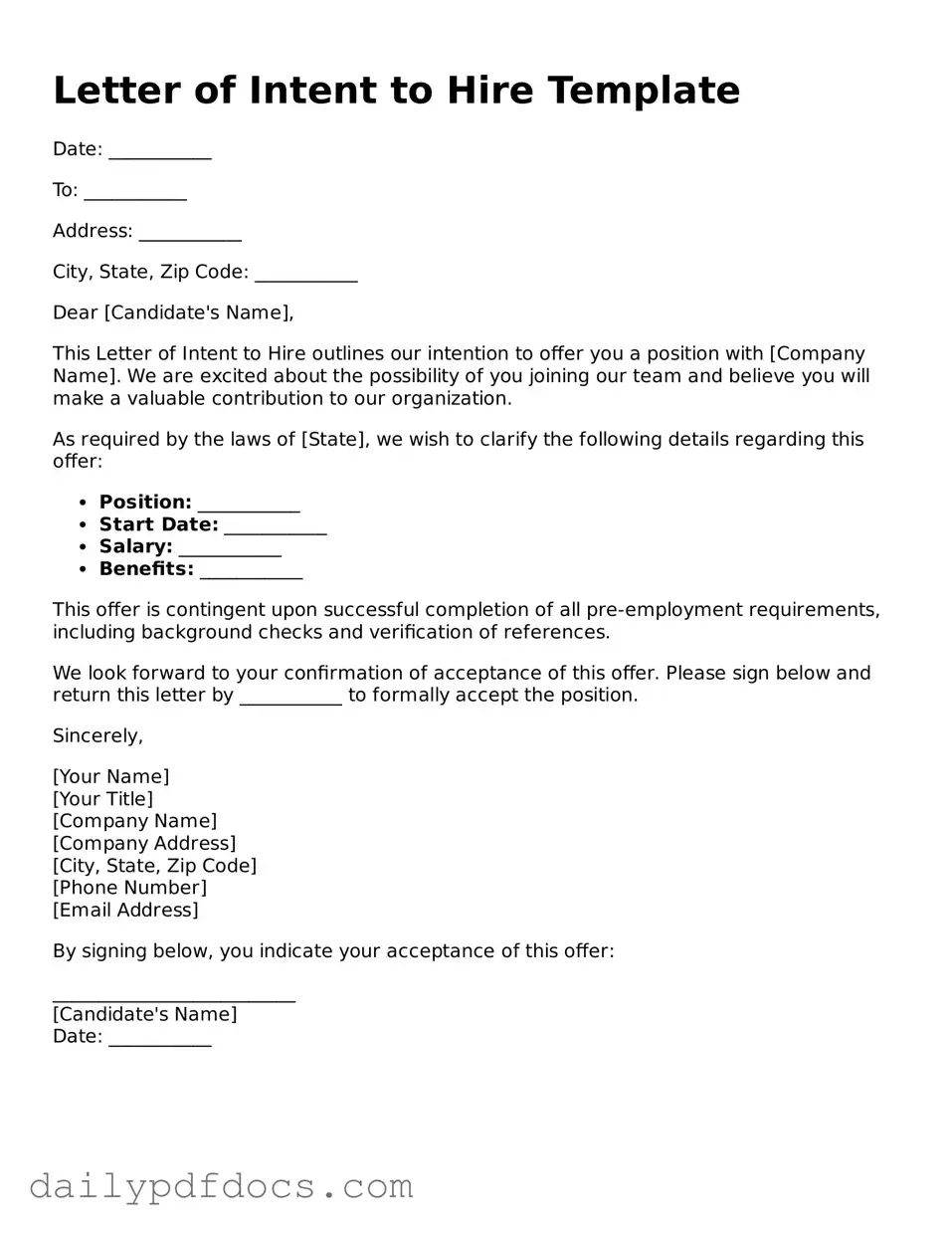Letter of Intent to Hire Template
Date: ___________
To: ___________
Address: ___________
City, State, Zip Code: ___________
Dear [Candidate's Name],
This Letter of Intent to Hire outlines our intention to offer you a position with [Company Name]. We are excited about the possibility of you joining our team and believe you will make a valuable contribution to our organization.
As required by the laws of [State], we wish to clarify the following details regarding this offer:
- Position: ___________
- Start Date: ___________
- Salary: ___________
- Benefits: ___________
This offer is contingent upon successful completion of all pre-employment requirements, including background checks and verification of references.
We look forward to your confirmation of acceptance of this offer. Please sign below and return this letter by ___________ to formally accept the position.
Sincerely,
[Your Name]
[Your Title]
[Company Name]
[Company Address]
[City, State, Zip Code]
[Phone Number]
[Email Address]
By signing below, you indicate your acceptance of this offer:
__________________________
[Candidate's Name]
Date: ___________
